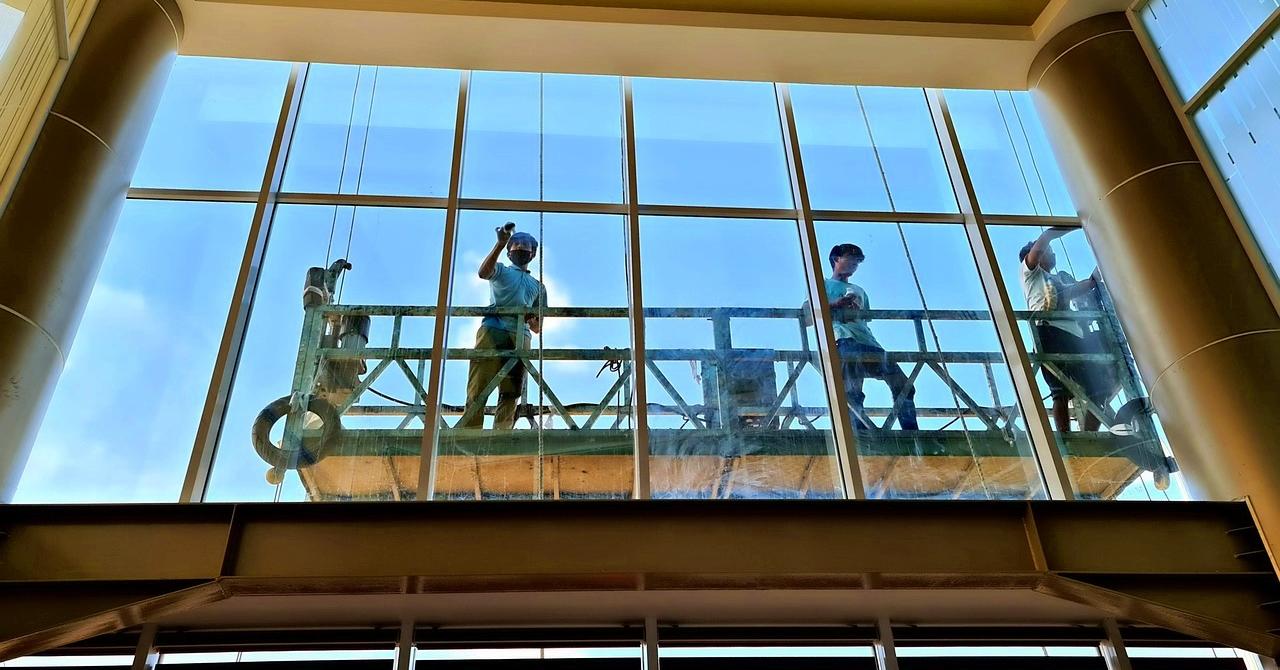To ensure the safety of all workers, Taiwan enacted the Occupational Safety and Health Act (OSHA). This includes guidelines and measures for protecting those assigned in towers, buildings, power lines, and other high elevations.
Any working area that is positioned two (2) meters above ground is considered as an “elevated” work space. When it comes to working in these places, employees’ safety and protection is of the utmost priority.

Tips for Working Safely in High Elevations
If you’re a construction worker, window cleaner, or power line installer (lineman), working in elevated areas is part of the job. To ensure your safety, the Workforce Development Agency (WDA) of the Ministry of Labor (MOL) has issued the following tips and reminders:
Undergo Safety Training
Before the work starts, the employer should provide safety training to all workers. They should know all about safety procedures, proper handling of equipment, identifying hazards, and other important matters.
Wear Safety Gear
Working in high elevations requires the use of safety gear and wearing personal protective equipment (PPE). These include helmets, protective gloves, and safety belts/harnesses. Furthermore, protective nets or safety nets should be installed in places where there is a risk of falling.
Check Everything Before Use
All equipment, materials, and ground conditions must be checked regularly. First of all, is the ground level for proper construction? Are the scaffolding materials safe (i.e. rust-free, not damaged)? Is your PPE still good and not torn or deformed? Any material or equipment that does not meet safety standards should be removed and replaced immediately.
Be Careful When Moving Equipment
Be extra careful when moving equipment, building the scaffolding, or removing the scaffolding and other materials. Move steadily and carefully; do not rush as this could lead to accidents!
Follow Proper Procedures
When moving, modifying, or removing the scaffolding — there is a proper procedure to be followed. The same goes for other activities; there are guidelines and steps created to ensure everyone’s safety during the job.
Maintain a Clean and Organized Area
As much as possible, the working area must be clean and clear, without unnecessary objects that could obstruct workers. Tools and materials that are simply lying on the scaffolding and other areas are hazards, which could cause workers to slip, trip, fall, or strike people below.
Give Enough Time for Rest
Rest days and rest periods are scheduled to make sure that workers are always in tip-top shape when they perform their jobs. Typically, managers and supervisors should provide 20 minutes of rest for every two (2) hours of consecutive work, since these jobs are physically demanding. They should also monitor the workers closely for any signs of fatigue and overexertion, because this could affect their health and performance.
Encourage Open Communication
The lines of communication among workers, supervisors, and managers should be clear. Managers and supervisors should be able to provide clear instructions and guidance. Meanwhile, workers should be able to approach their superiors and express their concerns, including safety matters.
Check for Weather Conditions
Weather conditions such as heavy rain and strong winds could cause slips, falls, and other safety risks. During these periods, it is best to suspend work until the rain stops and conditions improve.
Meanwhile, the weather could get extremely hot and humid during the summer. To prevent the risk of heat stroke and dehydration, workers must be given enough rest periods in shaded areas, and water, of course!
Establish Emergency Procedures
In cases of falls, slips, and other emergencies — workers and supervisors must be quick to act and respond. There should be clear emergency procedures, and everyone must know how to use first-aid equipment as well as emergency communication systems.

Working in high elevations such as towers, buildings, and power lines involves risks and hazards. Therefore, employers and workers alike should know and follow safety protocols at all times. By heeding the above tips and reminders, you can ensure your safety and well-being, even while working in elevated spaces.
Speaking of safety, you should also be vigilant against job scams. Check out this safety guide on how to avoid recruitment scams abroad.
